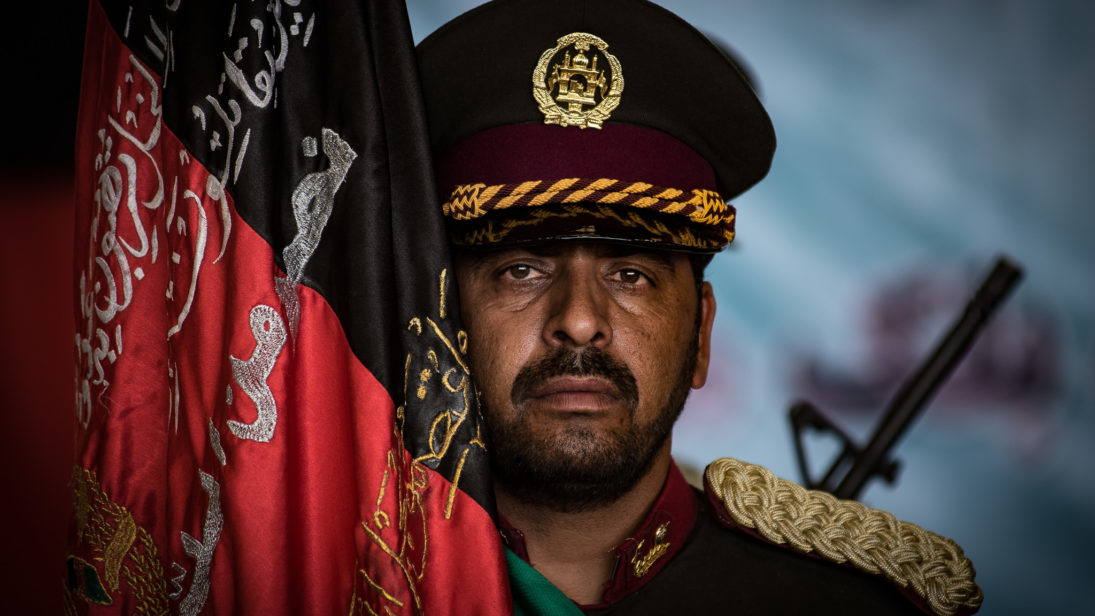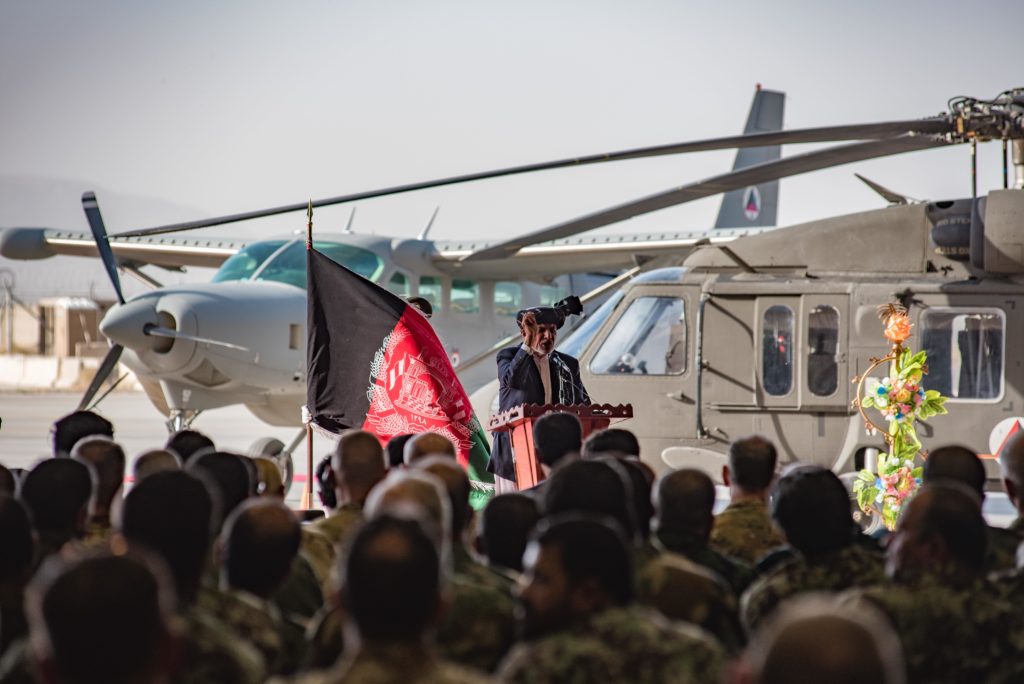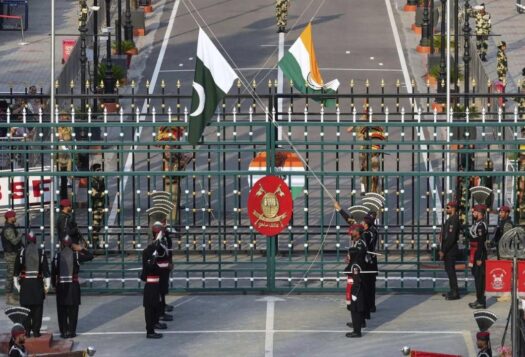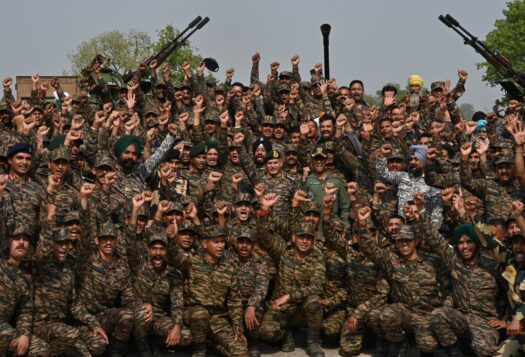
There is no denying the fact that Afghanistan is challenged by a deteriorating security situation. With the Taliban maintaining a presence in 70 percent of Afghan territory and staging deadly assaults in several provinces throughout 2018, the country’s security forces have faced record-high casualty rates and recruitment lows. In early December, the Pentagon’s choice for U.S. Central Command, Lieutenant General Kenneth McKenzie, said that the high death tolls among Afghan security forces “are not going to be sustainable unless we correct the problem.”
Yet U.S. President Trump’s conditions-based approach to fighting the war in Afghanistan has not seen much success, and there are reports that the United States is now poised to withdraw 7,000 troops from the country. Meanwhile, the peace momentum in Afghanistan this year also picked up speed, with President Ghani’s outreach to the Taliban at the Kabul Process, the Eid ceasefire, and direct talks occurring between the United States and representatives from the Taliban. Moreover, amid a usual threat of bullets and violence, Afghanistan continues to look to its future, with parliamentary elections conducted in October and presidential elections scheduled for later this year.
This precarious moment in Afghanistan’s history brings to light the degree to which the Afghan National Defense and Security Forces (ANDSF) are ineffective in the providing security to the country. The United States and Afghan government’s efforts to build up the capacity of the ANDSF have not yielded positive results because of the resurgence of the Taliban, and it continues to remain unclear how the ANDSF will surmount this obstacle.
AnIntractable Taliban
Building up Afghanistan’s domestic security forces to guard the country’s security was a critical element of former U.S. President Barack Obama’s Afghan strategy for the United States’ departure from Afghanistan. Since the draw down of coalition forces from Afghanistan in late 2012, casualty rates have considerably risen alongside an increase in the Taliban groups that are now active in nearly three quarters of Afghanistan. These groups are also targeting ANDSF checkpoints and villages, and move about freely in the streets without fear. During the first quarter of 2018, UNAMA documented 2,258 civilian casualties in Afghanistan, which is close to the losses during the same period in past years. The rare Eid ceasefire this year that underscored the peace momentum in Afghanistan was short-lived since the Taliban resumed attacks soon after the closing of the truce. In all, the Taliban are more intransigent, adaptive, lethal, and effective than they were when they were overthrown in 2001.
This exacerbation of violence since 2015 has led to an average of 30 to 40 Afghan soldiers and police officers dying each day .Record high casualties have been documented ever since the Afghan forces took control of their country’s security in 2015 from U.S.-led NATO combat troops. According to President Ghani, since local forces took over in 2015, more than 28,000 Afghan soldiers have died. Due to this high casualty rate, Afghans have been reluctant to enlist in the Afghan National Army (ANA), since it has become harder to fight the better equipped and increasingly aggressive Taliban insurgents.
Compounding this issue, there have been reports suggesting the Taliban’s direct interference in the recruitment process of the ANDSF, with families of recruits sometimes facing extortion at the hands of the Taliban. Additionally, the Taliban, through public statements, have sought to undermine the ANDSF by calling on government officials and security forces to defect, emphasizing the possibility of amnesty for those who switch sides. Upon observing the current wave of peace talks with the Taliban, the insurgents also indicated that if peace comes to Afghanistan, their return will not be as harsh as it was in the late 1990s. The impact has been felt in the form of low morale among the ANDSF and the damage dealt to the ANA recruitment process.

WhatCan Be Done?
Afghanistan and its allies can improve the state of the ANDSF by continuing to improve its capabilities in terms of aviation, intelligence, force management, and special forces. Since 2015, U.S. and NATO forces have focused on reconstructing Afghanistan’s security sector, which was poorly addressed in previous years. Under the mandate of a train, advise, and assist mission,the focus of coalition allies has shifted from regular combat operations to restructuring the ANA, with a particular emphasis on defending critical territory and urban centers and “disregarding less important areas that had little impact on the overall mission of the ANDSF,” according to a report by the Special Inspector General for Afghan Reconstruction.
One pragmatic way to improve the status quo might be for the ANDSF, which has been on the defensive, to launch offensive operations to regain territory and disrupt the Taliban’s revenue streams, for instance by destroying Taliban drug processing facilities. In the recent past, air strikes carried out by coalition forces have reportedly denied the Taliban of $20 million in revenue. The perilous situation in Afghanistan demands an application of the same strategy adopted a year ago.
To achieve this and effectively counter the Taliban’s offensives without the aid of allies like the United States, the ANDSF will have to build a domestic arms industry to maintain and update its defense equipment and develop much-needed air power capabilities. Afghan air power is at last modernizing and extending close air support to ANA soldiers, but it remains incomparable to the support provided by the coalition. Additionally, the Afghan Air Force has recently introduced to UH-60 Black Hawk helicopter and has plans to phase out the Russian-made Mi-17 helicopters. This new addition to its inventory will be an additional challenge the air force, which has primarily trained in operating the Mi-17s. It seems Afghanistan is far away from having sufficient resources to meet its own security needs, like maintaining its defense equipment and sustaining its security forces. The continuation of this status quo spells trouble for a post-coalition Afghanistan.
No Simple Solution
There is no well-crafted solution to challenges facing the ANDSF. The efficacy of the forces will remain a point of discussion for some time, since it has only been half a decade since Afghan forces took responsibility of their country’s security. What is clear is that the effectiveness of the ANDSF can only be achieved when the overall capacity-building of the ANDSF is achieved.
With such an intense Afghan security situation, Trump’s announcement of withdrawal of troops from Afghanistan will no doubt have a negative impact. A rollback of U.S. forces in Afghanistan will do nothing but aid the Taliban, the Islamic State, and other radical components, helping them to expand their influence regionally and over the Afghan population. An early exit of the U.S. troops from Afghanistan will leave behind a poorly trained defense forces, spoiling any capacity-building hopes of the ANDSF and the Afghan government. The security environment will deteriorate even more in the face of the dwindling recruits.
The withdrawal of U.S. troops would also undermine the peace talks that picked momentum in past few months, stymieing hopes of finding an end to the conflict. Additionally, the country’s first presidential election since 2014 is scheduled to be held in six months–an election that could be under threat if there is a sudden change to the training, assisting, and advising the government and the ANDSF is receiving from the United States and NATO. At a crucial time like this, allies should be in support of the Afghan government. But if the ANDSF continues to be weak, Afghanistan will certainly fail to stabilize–and chances are that history will continue to repeat itself.
Click here to read this article in Urdu.
Images: U.S. Air Forces Central Command


